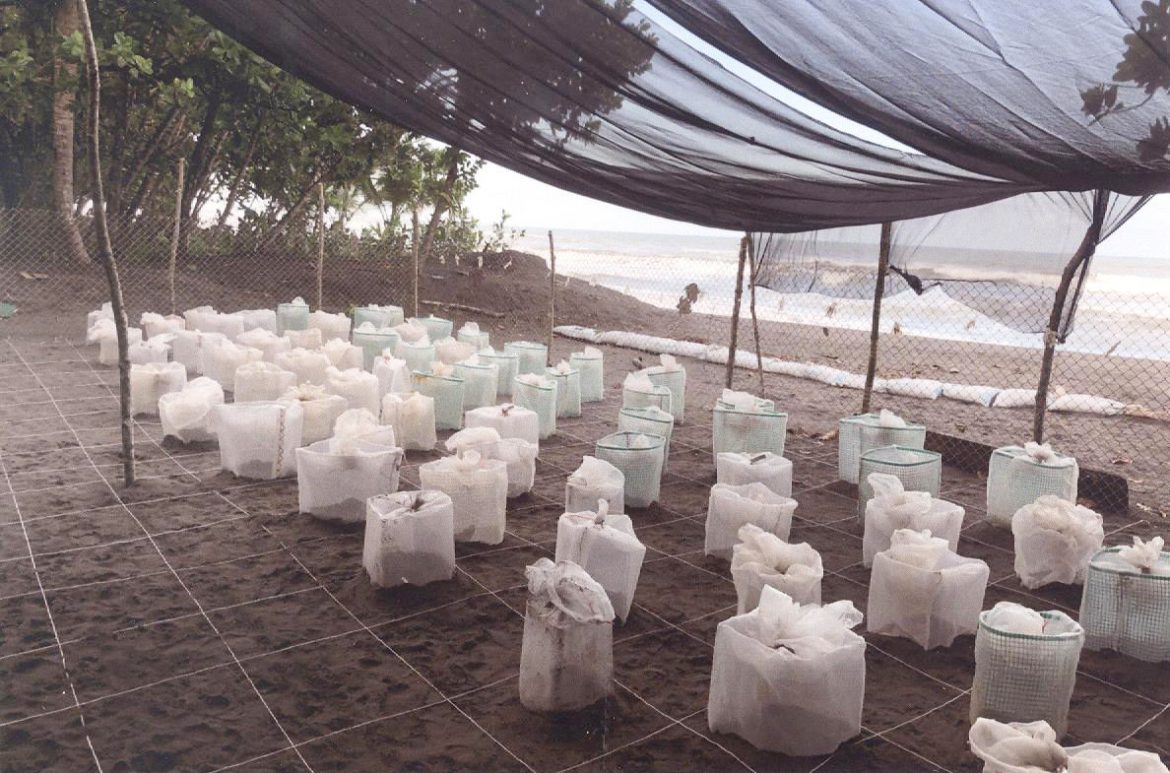Costa Rica Volunteer Work – When Mark Ash read online about a nonprofit group searching for volunteers to help save endangered sea turtles from poachers in a remote area of Costa Rica, he knew he had discovered a way to turn his passion for the prehistoric giant into action.
For two weeks, the 59-year-old Meadow Lands resident patrolled a nearly 4½-mile stretch of beach in Pacuare, Costa Rica, at night, in oppressive heat and darkness, searching for turtles to come onshore and lay eggs in the sand.
Ash was among 12 volunteers from around the world who participated from April 22 to May 7 in an ongoing program offered through the organization Latin American Sea Turtle Association (LAST), a sea turtle conservation organization.
“It was an incredible experience. You have a direct impact on saving turtles,” Ash said. “As tough as it was, I plan to go back.”
Pacuare – which is surrounded by dense jungle and can only be accessed by a boat that runs twice a week – is a large nesting ground for four species of endangered and critically endangered turtles.
Poachers steal the eggs in order to sell them (in bags of 10 for about $5), or to eat, said Nicki Wheeler, volunteer coordinator for LAST.
And since nests can contain as many as 100 eggs, there is money to be made.
In addition to patrolling the beach, the volunteers – who range from conservation-minded men and women to student research assistants looking for an opportunity to work and study with LAST’s on-site biologists – assist with tasks including collecting eggs from nests and relocating them to a safer hatchery, monitoring the nests for emerging hatchlings, guarding the nests, taking care of injured sea turtles, and measuring the shells of nesting turtles.
Ash, who delivers water for Dean’s Water, joined groups of volunteers who patrolled the beach in four-hour shifts between 7 p.m. and 3 a.m.
Each patrol group is led a patrol leader – members of the community, many of them former poachers – who earn a salary that is paid in part by the $42 a day volunteers pay for room and board.
“The volunteers are all these young kids in their 20s. I thought I was in good enough shape, but I clearly wasn’t,” said Ash, who recalled feeling “sweatier and more exhausted” than he’d ever been, his hips hurting from the lengthy patrols. “I thought I was going to die the first time I went on patrol.”
The volunteers brought the eggs they collected to a hatchery, where the eggs would be protected from poachers until they were ready to hatch.
Ash said the group encountered poachers every night, and LAST volunteers are told to obey a non-confrontation rule, so whoever reaches the nest first gets the eggs.
During Ash’s stay, LAST volunteers relocated 19 nests – which contained 1,505 fertile eggs and 623 yolkless eggs.
But poachers raided 16 nests.
“Seeing a poacher reinforces why you are there. Coming face to face with a poacher is unlike anything I’ve ever experienced,” Ash said.
The trip had its challenges, including the primitive conditions. The station has no electricity and no pipeline water, so the volunteers dealt with the oppressive heat and washed their clothes in buckets filled with water.
But, the struggles were worth it to Ash when he saw for the first time a leatherback turtle – a behemoth that grows up to 6 feet long and weighs up to 2,000 pounds.
“When I laid eyes on that turtle and how big it was, and the sound it made, I had no doubt they date back to the dinosaur age. The size of those turtles is mind-boggling. It was an impressive, overwhelming sight.”
He also forged friendships with other volunteers.
“We became so bonded. We went through quite an experience together. Many of us are probably going to be lifelong friends,” said Ash.
The turtle nesting season runs from about May through October, with hatchlings emerging from their shells after about 60 days, until December.
Ash did not get to see any of the turtle eggs hatch.
“That’s OK. Being there, doing what I did, was probably the most rewarding experience I’ve ever had,” said Ash, who also is a wood carver and now donates all of his earnings from wood carving to LAST. “It was so fantastic. I would recommend it to anyone. I can’t wait to go back.”
By Karen Mansfield, The Observer Reporter

